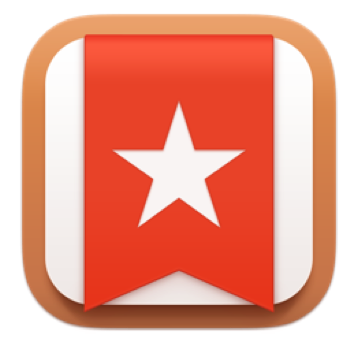In this five part series, we look at the actions needed to stand out in today’s crowded marketplace.
ACTION #1: Master the Art of Following Up
Nothing speaks of excellence as much as being a person of your word. How many times have you been promised that you will receive a call back, an email, or referral that never comes? It happens daily for most of us. While it is understandable that “things come up,” and people get distracted and forget, the good new is this means the bar in the marketplace has been set pretty low. You will stand out strongly if you set up rituals and systems to remember.
-
Promise less but always keep your promises.
It not unusual to be asked to do the unreasonable these days. Common requests include invitations to excessive and interminable meetings, and urgent calls for detailed updates and check-ins. Politely refuse them (I do so all the time) and negotiate a workable follow-up alternative on the spot. Explain what you can’t do nicely, then immediately what you can, for example: “I am sorry I won’t be able to make that meeting or prepare that status report by tomorrow, etc., but I can ________.” Need some encouragement in doing so? Greg McKeown’s superb book Essentialism is a must-read for those who worry that they will soon be fired or not seen as a “team player” if they say “no” more often.
Once you have lightened your load, your next step is to follow up on what you have committed to do. Here’s how:
-
Develop a system for never forgetting to follow-up.
Strategy 1: Use an App
Everyone has a different take on the best system, but the point is to have a system for following up. The truth is any system will beat no system, every day!
There are lots of apps to help you stay on top of your follow-up. I use Wunderlist. It’s available for free for your PC or Mac and as an iPhone/Android app.
Whenever I have to remember to follow up with someone, I just drop a note to myself into Wunderlist, right then and there. It has a simple interface, is free, and syncs to my smartphone and all my computers.
Strategy 2. Hold a Weekly Personal Business Meeting.
A Weekly Personal Business Meeting is the name I use for my simple, once-a-week, personal scheduling session. The key is that you not only block out your work tasks but also time on the calendar for personal pursuits. This includes your self-care, e.g., exercise times, doctor’s appointments, etc., as well as space for personal projects/hobbies, friends, family and spiritual activities. As easy as it sounds, over the past six months, I have polled scores of corporate audiences and the average number of people who pause for this easy but crucial personal time management meeting hovers around 1%. So, if you implement your own weekly personal business meeting, you will be in a rare group indeed-not a bad neighbor if you wish to become a person of influence.
[tweetthis]Because just 1% hold a weekly personal business meeting, I enjoy a nice advantage in the marketplace. – Dr. Bill Dyment[/tweetthis]
During your meeting, review your needed follow-up activities on Wunderlist or the app/location of your choice. Then, refer back to your list throughout the week. If you would rather use a journal or spreadsheet, that’s fine. Whatever your method, the goal is to be consistent and to find what works best for you. Keep it simple, effective, and get it done!
-
Make your follow-up as personal as possible, even if you need the help to respond.
No one likes a form response. But, if you receive hundreds of emails a day, you will need to be a bit creative. And, you may need help.
Batching, or following up only at scheduled times, helps a lot. Check your emails, for example, just three times a day, if at all possible: First thing in the morning, right after lunch and at the end of your workday. This can take discipline, focus and even a bit of evasiveness.
Even as I compose this article, many emails, vmails and texts have come into my computer inbox and phone. The temptation to take a peek at what might be new work or important information is hard to resist, but I have committed to blocking out this time each week solely for writing. Make it easier on yourself, consider turning off visual and auditory message alerts for a certain period of time. It is not uncommon immediately after the satisfaction of posting a new piece, to check my email, texts and vmail to find people asking, “Where were you? I tried to reach you an hour ago?” But I know the reality. If I had reflexively catered to everyone’s need for an instant response, my coauthor and I would never have finished our book, a milestone that transformed our business, and opened countless speaking opportunities here and abroad.
By batching your emails you will be surprised with how many you can respond to efficiently. If you are still using your email inbox as your filing cabinet, it’s time to put it to better use by creating subfolders where emails automatically arrive sorted and organized. Seeing all your emails, irrespective of importance, in one “megafile” is overwhelming and likely result in avoidance and inefficiency. If you have a support person, work together on sorting criteria and responses to common inquiries that you either delegate entirely or finish with a few personalized words of your own. In time you will notice emails fall into predictable categories: Promotions, social media, spam, FYI, requests for meetings, call backs, business inquires, pings from friends and family, etc. With practice, all can be handled responsively and efficiently.
A Final Tip:
Just as you can’t win a ball game playing all defense, you won’t stand out by merely becoming the a “master responder.” Set up your offensive strategy too. Use your weekly personal business meeting to decide how often and with what strategy you will initiate contact with others as well.
Even small but consistent “offensive actions” can add up powerfully. If you purpose to reach out to three LinkedIn contacts, about 10 minutes of effort, and two new people a day, just a little more time, in a typical 200 work day year, that’s 1000 offensive connections made!
Fire your excuses and make it happen! In just a few weeks, you will be seen as a person who is impacting others in a powerfully positive way.


